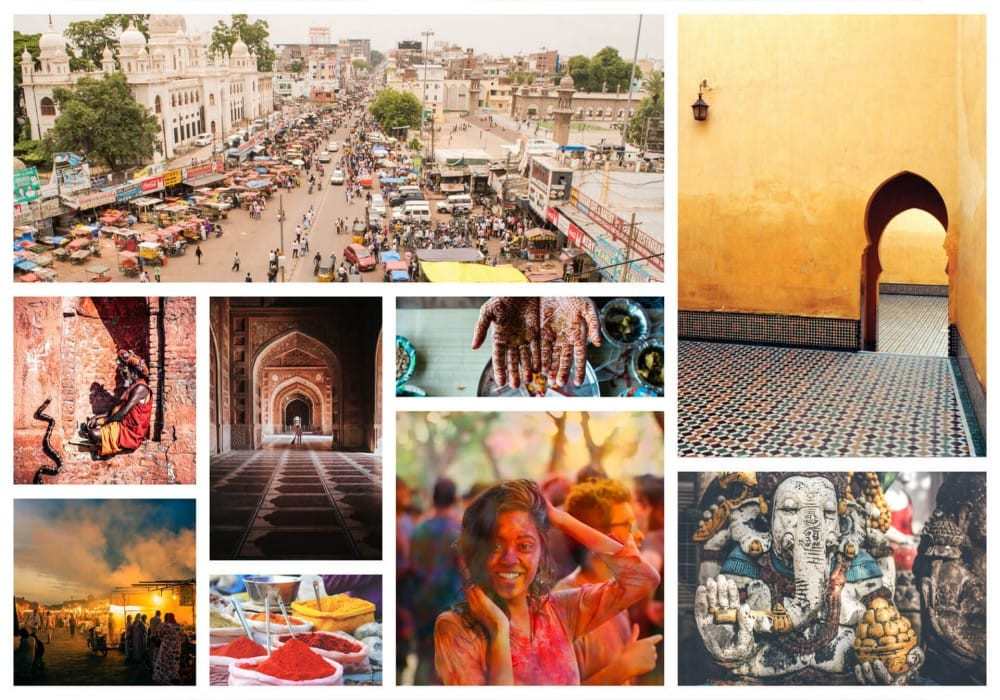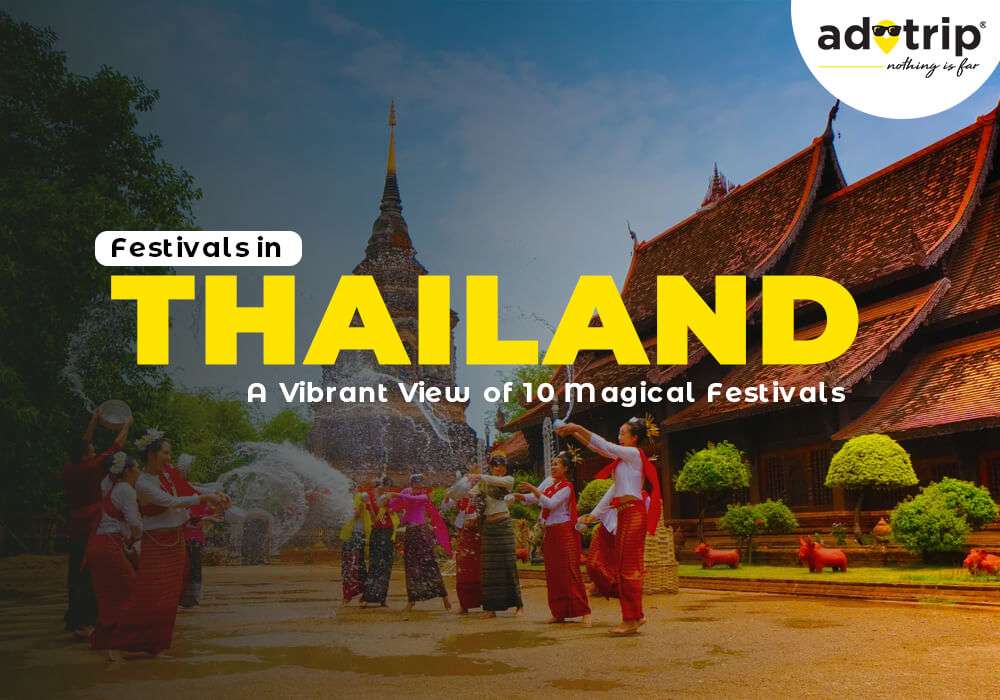
Last Updated At: 11-Jul-2025
Singapore VS Thailand | Choose Your Favourite Destination In 2025
Visitors are enthralled by the distinctive fusion of culture, modernity, and natural beauty while living in Singapore or Thailand, two dynamic countries in Southeast Asia. Singapore, known for its flawless urban design and recognisable skyline, is a major financial centre for the world. Its neighbourhoods, each of which exudes its particular character, reflect the city's cultural diversity.
The Lion City blends modernity and tradition with conserved historical landmarks tucked away amid modern development. Thailand has a fascinating past, a compelling spiritual foundation, and beautiful scenery. The nation has a profound admiration for history in everything from the vibrant marketplaces of Bangkok to the serene temples of Chiang Mai. Travellers looking for adventure and leisure flock to Thailand for its breathtaking beaches and green highlands. The country's cuisine, which is renowned for its powerful tastes, further envelops tourists in its cultural heritage.
If you are thinking about what is the lower cost of living in Singapore or Thailand? Then, living in Thailand is less compared to Singapore. The choice between the urban allure of Singapore or the cultural and natural beauties of Thailand comes down to personal preference because each place offers a unique and fascinating experience. You don't have to worry about job opportunities in Singapore or Thailand because numerous options available.
Weather | Singapore or Thailand
Talking about Singapore or Thailand weather the climate of Singapore has year-round high humidity and constant temperatures. The city-state usually experiences thunderstorms and a lot of rain. Thailand's climate, in contrast, differs according to region. There is a distinct dry and wet season with colder temperatures in the northern regions, particularly Chiang Mai, from November to February. The monsoon season throughout southern Thailand lasts from May to October. Heavy rain as well as an impact on popular tourist attractions like Phuket and also Krabi are its defining traits. The dry season, which lasts from November to April, is defined by clear skies with pleasant temperatures. Singapore's climate is generally more consistent than Thailand's, where the seasons and location can affect the weather.
Natural Beauty | Singapore or Thailand
Singapore and Thailand have stunning natural scenery, but the trip to Singapore or Thailand for vacation provides different experiences. Despite its urbanisation, Singapore surprises with well-kept green spots like the famous Gardens by the Bay and the serene beaches of Sentosa Island. The city-state's effective planning smoothly incorporates nature into modern architecture, creating a unique fusion of urban and natural attractiveness. Thailand's natural beauty, on the other side, is more untamed and rocky. The nation is well known for its lush rainforests, breathtaking islands, and tranquil beaches.
Crystal-clear waters, striking limestone cliffs, and a high level of marine life can be found in Phuket, Krabi, and the Phi Phi Islands. Thailand's national parks in the interior, like Khao Sok, provide views of prehistoric jungles, wildlife, and lovely lakes. Thailand's appeal comes from its untamed and diversified landscapes, contrasting Singapore's polished and perfectly created beauty. Singapore and Thailand provide distinctive and enthralling natural experiences that cater to many preferences, whether you are looking for the regulated harmony of urban greenery or the vast expanse of tropical paradises.
Read More : Places To Visit In Singapore
Major Attractions in the Singapore
These are just a few of Singapore's numerous attractions showcasing the city-state's breathtaking natural beauty and tranquil tropical surroundings.
- Haw Par Villa: Chinese stories are depicted in intricate and vibrant statues at Haw Par Villa.
- Singapore River: A lovely view of the boats and buildings along the Singapore River.
- S.E.A. Aquarium: Visitors look at the enormous viewing panel exhibiting aquatic life.
- National Museum of Singapore: The National Museum of Singapore is a historic structure of colonial architecture.
- ArtScience Museum: The ArtScience Museum's distinctive lotus-shaped architecture with water reflections.
- Singapore Flyer: Overlooking adjacent structures, the Singapore Flyer overlooks the urban landscape.
- Little India: Shops with vibrant decorations and a bustling bazaar in Little India.
- Chinatown: A bustling street in Chinatown that is surrounded by stores and restaurants and decorated with lanterns.
- Singapore Botanic Gardens: Pathway through gardens with thick vegetation with colourful flowers in the background.
- Merlion Park: The Merlion monument has water gushing from its mouth and is in front of Singapore's skyline.
- Universal Studios Singapore: A major roller coaster ride can be seen at the colourful entrance to Universal Studios Singapore.
- Singapore Zoo: A giraffe greets tourists in the foreground, with lush vegetation and other animals in the background.
- Sentosa Island: Sand beachfront at Sentosa with beachgoers taking advantage of the weather.
- Gardens by the Bay: Supertree structures can be found in spectacular futuristic gardens.
- Marina Bay Sands: A view of the cityscape from the three-tower Marina Bay Sands rooftop pool.
Read More : Places To Visit In Thailand
Major Attractions in the Thailand
These are just a few tourist destinations in Thailand that showcase its diverse cultural and natural beauty.
- Grand Palace, Bangkok: Bangkok's majestic majestic Palace has elaborate golden spires and intricate architectural details.
- Wat Arun: The central prang of Wat Arun rises over the Chao Phraya River and is covered in vibrant porcelain tiles.
- Ayutthaya Historical Park: Ancient temple buildings and stone ruins in Ayutthaya Historical Park are surrounded by beautiful vegetation.
- Chiang Mai Old City: Traditional temple within the walls of the Old City of Chiang Mai, encircled by charming lanes.
- Phi Phi Islands: Aerial picture of the Phi Phi Islands encircled by crystal-clear waters and verdant scenery.
- Railay Beach: Railay Beach is framed by limestone cliffs, with people unwinding on the sandy shore.
- Erawan National Park: The multi-tiered cascades of the Erawan waterfall are encircled by luxuriant tropical flora.
- Sukhothai Historical Park: Historical buildings and ancient temple remains can be seen there.
- Floating Markets: A vibrant floating market with vendors selling crafts and other goods.
- Doi Suthep Temple: Golden chedi of Doi Suthep Temple against an azure sky, surrounded by beautiful vegetation.
- Chatuchak Weekend Market: Chatuchak Weekend Market is crowded and filled with various vendors and customers.
- Hua Hin Beach: People take advantage of the sun and sea on the palm-lined Hua Hin Beach.
- Jim Thompson House: A wooden structure and an attractive garden are features of Jim Thompson House.
- Khao Sok National Park: Cheow Lan Lake in Khao Sok National Park features towering limestone cliffs and emerald waters.
- Pai: Beautiful view of Pai town set amidst mountains covered in greenery.
Cuisine | Singapore or Thailand
Singapore's diversified population is reflected in the lively blend of numerous influences found in its cuisine. The city-state, with its renowned hawker centres, provides a variety of foods, from spicy chilli crab and fragrant laksa to savoury Hainanese chicken rice. Chinese, Malay, Indian, and Peranakan flavours are expertly incorporated into Singaporean cuisine to create a mouthwatering culinary scene. In contrast, sweet, sour, spicy, and salty flavours are creatively combined in Thai cuisine. Thai cuisine is recognised for its creative use of fresh herbs, chile, and lime in dishes like Pad Thai, Tom Yum Goong soup, and green curry. Singapore and Thailand are must-visit locations for food lovers looking for delicious experiences because both nations highlight their distinctive culinary traditions.
Cultural Experiences | Singapore or Thailand
Thailand and Singapore provide fascinating cultural experiences that fascinate visitors with unique charms. Singapore's neighbourhoods like Chinatown, Little India, and Kampong Glam, where vibrant markets, elaborate temples, and traditional shophouses highlight the city's rich heritage, are clear examples of its cosmopolitan spirit. Modernity and tradition can coexist in situations like the Thaipusam festival and the Chinese New Year celebrations. Conversely, Thailand is known for its rich cultural heritage, rooted in its extensive history and folklore. Thailand emanates a sense of spirituality and authenticity, from visiting Bangkok's tranquil temples and sumptuous Grand Palace to the traditional Long Neck Karen tribe within the north. Thai rites and customs are displayed during celebrations like Songkran and Loy Krathong. Both Singapore and Thailand deliver rich cultural interactions that leave lasting memories for people wishing to discover their varied heritage, whether the disciplined perfection of a Thai dance performance or the mesmerising creativity of Thai cuisine.
Currency | Singapore or Thailand
Due to their unique economy and regional importance, Singapore and Thailand have different currencies. Singapore uses the Singapore Dollar (SGD), famous for its stability and significant worldwide presence due to the nation's expanding financial sector. Thailand uses the Thai Baht (THB), which has a more significant regional impact. While domestic economic reasons can impact the THB's value, the SGD is frequently regarded as a safe-haven currency preferred by investors. These currencies represent the various economic environments of both nations, with Singapore's thriving economy standing in contrast to Thailand's more varied economic challenges.
Visa | Singapore or Thailand
Both Singapore and Thailand have different requirements and procedures for obtaining visas. Singapore is renowned for its tight immigration regulations and grants various visas for business, tourism, and employment. Due to the efficiency and transparency of the nation, the application procedure is rather simple. In contrast, Thailand also provides various visa types, such as tourist, business, and retirement visas. The procedure, however, could get more complicated, with fluctuating specifications and the possibility of prolonged processing delays. The visa systems of the two countries serve different purposes, with Thailand's more complex and diversified system standing in contrast to Singapore's efficiency. Travelling to Singapore or Thailand safer if you will first check all the important information related to visa restrictions.
Nightlife & Entertainment | Singapore or Thailand
Both Singapore and Thailand have thriving nightlife as well as entertainment scenes, and each has a unique personality. In addition to extravagant clubs, rooftop bars, and live music venues, Singapore is renowned for its eclectic nightlife. Popular entertainment hotspots Clarke Quay and Marina Bay Sands provide a variety of international DJs, theatre productions, and dining opportunities. However, especially in cities like Bangkok and Pattaya, Thailand has become known for having a vibrant and varied nightlife. Thailand's streets come alive with street sellers, karaoke bars, and even nightclubs that cater to all tastes, from lively night markets to the legendary Khao San Road. Koh Phangan's Full Moon Party is a renowned event which attracts people from all over the world. Both locations offer plenty of alternatives for entertainment. Still, the scene in Singapore often leans toward refinement and modernity, whilst the options in Thailand are more diverse and often incorporate traditional features.
Thailand could entice visitors looking for a vibrant, culturally diverse nightlife, while Singapore may appeal to visitors seeking a refined, modern experience.
Start an exciting adventure with Adotrip, which takes you from Singapore's modern wonders to Thailand's cultural riches. Discover Thailand's vivid diversity and Singapore's sophistication. Immerse yourself in these two exceptional locations while exploring new vistas and enjoying regional cuisine. Your journey is here!
With us, nothing is far!
Frequently Asked Questions About Singapore or Thailand
Q1. What are the major cultural differences between Singapore and Thailand?
A1. Thailand is noted for its deeply rooted traditions, spirituality, vibrant festivals, and slower pace of life. Singapore is renowned for its efficiency as well as multiculturalism.
Q2. How do Singapore and Thailand differ in terms of government and politics?
A2. With a majority ruling party and a parliamentary republic government, Singapore fosters stability and economic growth. Thailand's constitutional monarchy and history of shifting power dynamics have resulted in political instability, including military coups.
Q3. What are the popular tourist attractions in both Singapore and Thailand?
A3. Here are some of the popular tourist attractions in both Singapore and Thailand mentioned below:-
Singapore
- Gardens by the Bay
- Merlion Park
- Singapore Zoo
- National Museum
- Marina Bay Sands
Thailand
- Ayutthaya Historical Park
- Grand Palace
- Phuket
- Phi Phi Islands
- Floating Markets
Q4. How does the cuisine of Singapore differ from that of Thailand?
A4. Hainanese chicken rice is one example of a dish from Singaporean cuisine that combines Chinese, Malay, Indian, and Western influences. Foods like Pad Thai and Tom Yum Goong, which use potent aromas, fragrant herbs, and spices, are examples of Thai cuisine.
Q5. How do Singapore and Thailand compare in terms of economic development?
A5. The highly developed economy of Singapore, one of the richest countries on the planet, is based on manufacturing, technology, and especially finance. Thailand's economy is less developed than other nations' economies while being shifted, including manufacturing, tourism, along agriculture as its key industries.
Q6. What are some key differences in the education systems of Singapore and Thailand?
A6. With a strong emphasis on STEM courses, Singapore's education system is famous for its rigorous academic concentration and excellent global rankings. Although Thailand's system is more diversified, it still needs help with access and quality.
Q7. What are some major festivals celebrated in both Singapore and Thailand?
A7. Here are some of the major festivals celebrated in both Singapore and Thailand mentioned below:-
Singapore
- Chinese New Year
- Deepavali
- National Day
- Chingay Parade
- Hari Raya Puasa
Thailand
- Loy Krathong
- Yi Peng Lantern Festival
- Songkran Festival
- Loi Krathong
- Songkran
Q8. How do Singapore and Thailand approach environmental conservation and sustainability?
A8. Singapore strongly emphasises effective waste management, green spaces, and urban planning. Thailand strives to balance development and nature by emphasising forest protection, sustainable tourism, and community-based eco-friendly methods.
Q9. What are the transportation and infrastructure differences between the two countries?
A9. With its MRT and buses, Singapore has a state-of-the-art, effective public transit system. Despite regional differences in infrastructure development, Thailand has a diverse transportation system that includes buses, trains, and tuk-tuks.
Q10. How do Singapore and Thailand handle the tourism and hospitality industries?
A10. Singapore promotes high-end travel by offering opulent accommodations, well-known sights, and special events. Thailand offers a variety of experiences and offers affordable tourists lively street markets, a rich cultural history, and unspoiled beaches.
--- Published By Adotrip
Latest Blogs

Cash in the Wild: My Safari Adventure Across Kenya with Only...

One Day Picnic Spot Near Pune - Adventure, Trekking and Natu...

One Day Picnic Spots Near Mumbai - Monsoon, Adventure, Beach...

The Best Places to Go in Thailand in 2025














 Dubai
Dubai Malaysia
Malaysia USA
USA





